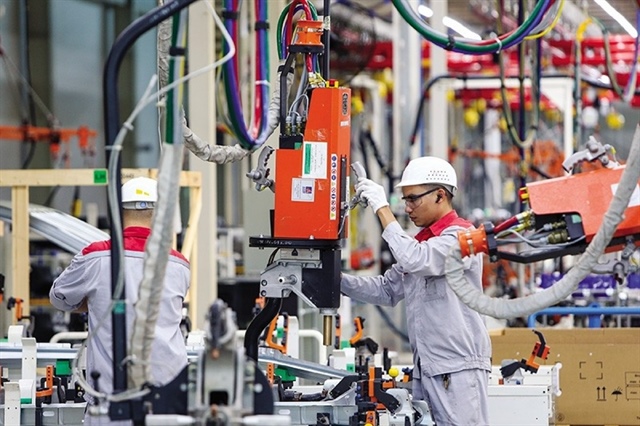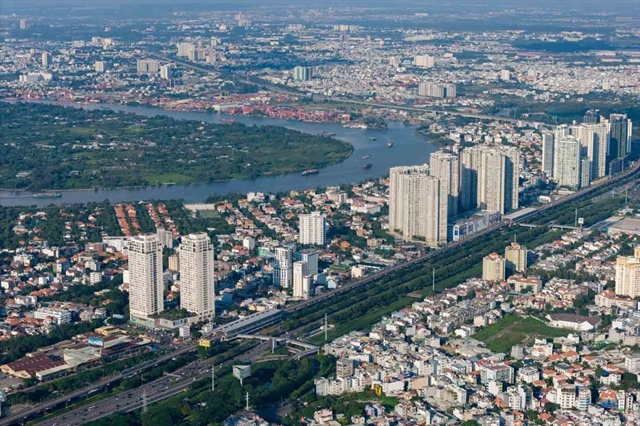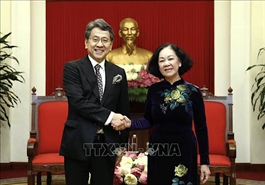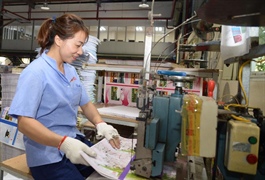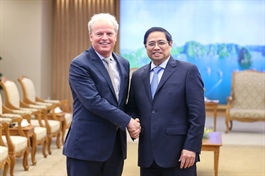Pacific Rim treaty offers e-commerce opportunities
Pacific Rim treaty offers e-commerce opportunities
The Comprehensive and Progressive Agreement for Trans-Pacific Partnership (CPTPP), in force since late 2018, includes provisions encouraging small and medium-sized enterprises (SMEs) to participate in the free trade agreement, in addition to e-commerce-related clauses.
Reduced tariffs, costs
The CPTPP is a large regional trade agreement among 11 countries from both sides of the Pacific, informally referred to as the TPP11. It covers around 14 percent of the global economy and a market of around 500 million people. The Pacific Rim treaty is expected to reduce tariffs on an estimated 95 percent of goods and services traded among the member countries, including commodities and even finished goods like apparel, footwear and electronics. This free trade agreement also simplifies customs procedures and includes provisions encouraging more cross-border e-commerce among member countries, good news for member countries’ SMEs.

The CPTPP offers opportunities to increase furniture exports |
For Southeast Asian members, the CPTPP expands the number of countries and product types that members can trade more easily. Singapore, for instance, now has two new trading partners it originally had no trade agreement with, namely Canada and Mexico. Vietnam can now trade more easily with Canada, and also enjoy reduced tariffs on its primary exports – agricultural, aquatic, electric and electronic products – in key markets like Japan.
According to reports by the Straits Times and Reuters, countries that have ratified the agreement have already cut tariffs by an estimated 90 percent on goods traded between them. The rest of the tariff changes are being implemented over a longer period. These lower tariffs and duties make importing and exporting from CPTPP member countries much cheaper, and also widens the trade networks of member countries. This means SMEs and e-commerce merchants who sell B2C (business to consumer) can source higher quality finished products or materials from any of the 11 countries at much cheaper tariff rates.
The agreement also addresses the reluctance of consumers to pay customs duties on cross-border online purchases by reducing some of these tariffs. With these tariff reductions in place, e-commerce merchants compliant with the CPTPP would likely see improvements in international online sales.

International online sales have improved |
Regional cumulation: tapping into supply chains
Regional cumulation or full cumulation rules encourage companies and SMEs in CPTPP countries to tap into the supply chains of other members when sourcing materials to create their products. Usually, in free trade agreements, a certain percentage of a product needs to be made using resources from the exporting country, known as “originating content” before it can qualify for preferential tariff rates.
Regional cumulation means that materials from one CPTPP member country are treated the same as those from another CPTPP member. The result is that a product that is made mostly from materials sourced from other CPTPP member countries will qualify for preferential tariff rates when imported into other member countries. In simpler terms, if an outfit created in Singapore is mostly made up of materials from New Zealand, Australia and Vietnam, it would qualify for CPTPP preferential rates when it goes through customs at CPTPP member countries like Japan or Canada. This means SMEs and e-commerce merchants now have more sources for products and materials in their manufacturing process which they can sell both domestically and to other CPTPP member countries while still enjoying preferential tariff rates.
| With CPTPP, SMEs and e-commerce merchants who sell B2C (business to consumer) can source higher quality finished products or materials from any of the 11 countries at much cheaper tariff rates. |


